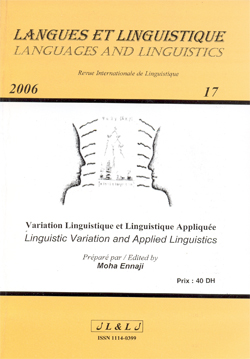Abstract
Compounding is
essentially a morphological process involving the merger of two or more free
forms to form a new word. Two types of compounding are distinguishable
namely, primary/root and synthetic or verbal. “In many respects compounding
represents the interface between morphology and syntax par excellence. This
is particularly true of synthetic compounds” Spencer (1991: 309).
Reduplication, which consists of the copying of the whole or part of a base,
also constitutes a type of compound-formation. Be that as it may, regardless
of type, during compound formation in Akan, various phonological processes
take place. These include vowel harmony, homorganic nasal assimilation, loss
of final vowel/syllable, vowel sequences at morpheme boundary and their
simplification, nasalization of voiced plosives that precede nasal segments
and tonal alternations. So far no scholar Akan has studied the phonology of
compounds in Akan paying remarkable attention to tonological rules
associated with compound-formation in Akan.
This article is therefore designed to fill a vacuum.
It studies only the tonal perturbations identified with compound-formation
in the three major dialects of Akan namely, Fante, Asante and Akuapem. To
cut down on the volume of this article, I have excluded our study of the
tonology of reduplication in Akan, which presents very interesting and
complex tonal perturbations. In the central portions of this article,
however, all the other phonological processes that come up when studying
Akan compounds are shelved or at best briefly discussed so as to help
readers follow the discussion without being confused. I have, for instance,
discussed vowel simplification process briefly while some others are
discussed in footnotes. I have also subclassified the Akan verbs and nouns
into classes on the basis of their lexical tone melodies, seeing that verbs
or nouns of the same class behave tonally the same. What is more, I have
studied compounds involving two or more words from the same major word class
or from diverse word classes. Compounding of phrasal verbs as well as
compounding of sentences has also been duly dealt with in this article.
